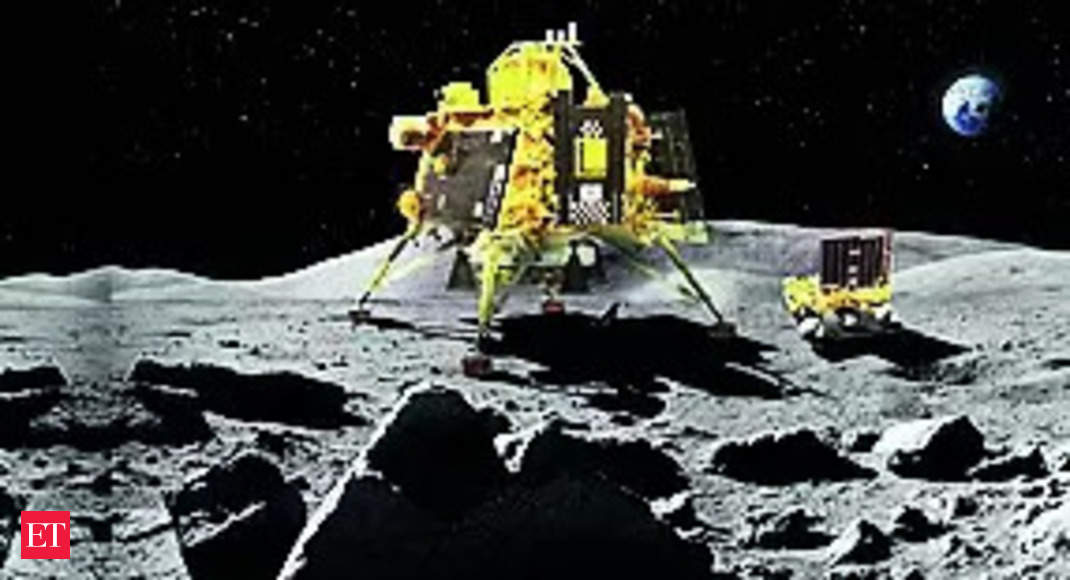After the successful deployment of Chandrayaan-3’s lander and rover on the moon, ISRO is hoping that their mission life will not be limited to one lunar day or 14 earth days, and that they will come back to life when the sun again rises on the Moon, to carry on with the experiments and studies there. The lander (Vikram) touched down near the south pole of the Moon at 6.04 pm on Wednesday, successfully completing one of the Chandrayaan-3 mission’s stated objectives of soft landing on lunar surface. ISRO had earlier stated that the lander and rover are designed to operate for one lunar daylight period, which is about 14 Earth days, to study the surroundings there. However, ISRO officials do not rule out the possibility of them coming back to life for another lunar day. The rover (Pragyan) will carry out in-situ chemical analysis of the lunar surface and study the elemental composition of lunar soil and rocks around the lunar landing site. The Moon’s south pole region is being explored because there is a possibility of water being present in permanently shadowed areas around it. The rover will send the data to the lander which will then send it to Earth. ISRO Chairman S Somnath explained that the experiments on the lander and rover will take place one after the other, and that all of them have to be completed within one day on the Moon, which is 14 Earth days. He mentioned that once the sun sets, everything will be in pitch darkness and extreme cold weather conditions, making it impossible for the systems to survive. However, if the systems do survive and come to life again, they will be able to continue their work. ISRO officials hope that this will be the case. The article concludes by mentioning that the mission’s objective is to further enhance understanding of the lunar surface and explore the possibility of water presence in the Moon’s south pole region.
Chandrayaan-3: ISRO hopes mission life of lander and rover will not be limited to one lunar day

-
Uncategorized









